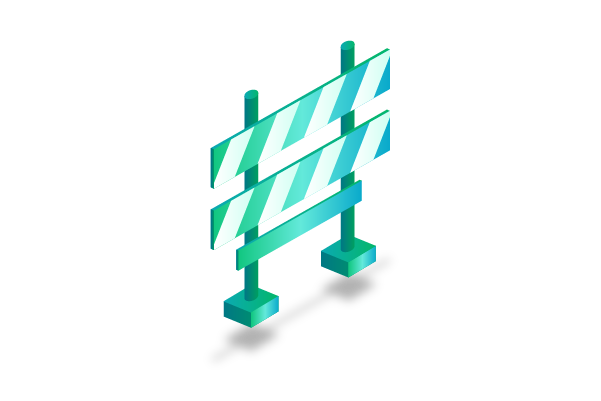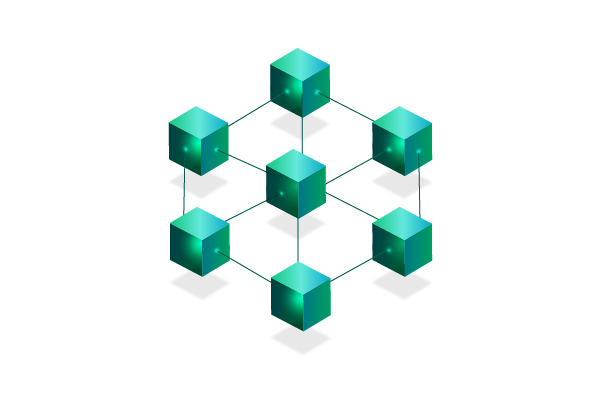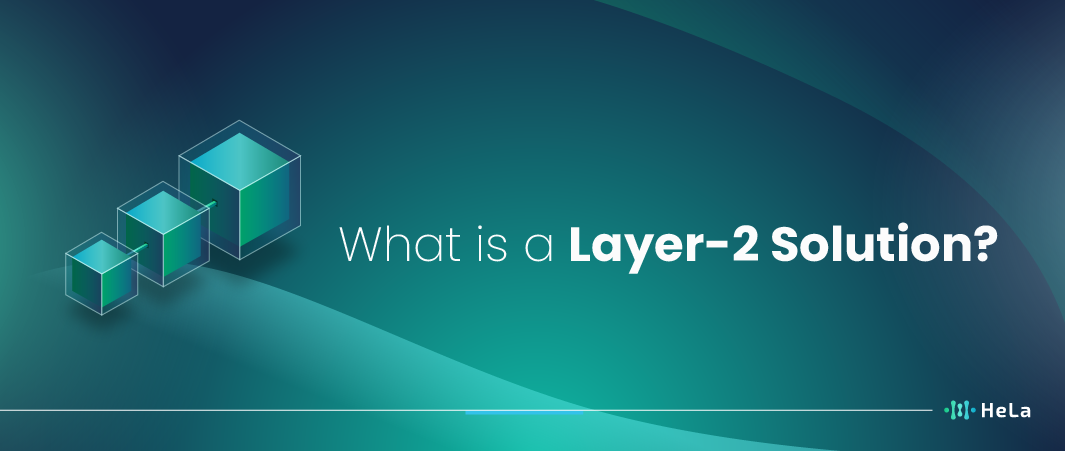Navigating the ever-changing landscape of blockchain technology has its challenges, and one that consistently crops up is scalability. As blockchain networks gain traction and user numbers surge, the call for a scalable infrastructure becomes louder. This is where Layer-2 solutions step in—a beacon of hope in the face of this persistent challenge. In the following discussion, we’ll take a closer look at the realm of Layer-2 solutions, demystifying their inner workings, exploring their pivotal role in blockchain ecosystems, and understanding the profound impact they bring to the crypto landscape.
So, what exactly is a layer-2 solution, and how does it tackle the scalability puzzle? Essentially, a layer-2 solution operates as an additional framework built on top of existing blockchain networks. Picture it as a smart, efficient add-on that helps process transactions more swiftly and cost-effectively. This layered approach alleviates the burden on the main blockchain, allowing it to handle a greater volume of transactions without getting bogged down. In simpler terms, it’s like adding an express lane to a busy highway, making the overall journey smoother and faster.
The significance of layer-2 solutions in the blockchain space cannot be overstated. They act as the much-needed catalyst for mainstream adoption by mitigating the scalability bottlenecks that often hinder user experience. As blockchain networks grow in popularity, the layer-2 solution becomes a linchpin, ensuring that the system can handle increased demand without compromising on speed and efficiency. This not only enhances the overall performance of blockchain networks but also opens the door to a myriad of possibilities for decentralized applications and crypto enthusiasts alike. In essence, layer-2 solutions are the practical answer to the scalability question, propelling the crypto landscape towards a more accessible and user-friendly future.
Understanding the Scalability Challenge

In the face of the growing adoption of blockchain technology, particularly with the rise of decentralized applications (DApps) and the increasing number of participants in the network, the scalability challenge has become a critical issue. The transformative potential of blockchain, characterized by transparency, security, and decentralization, is hindered by the limitations of current platforms, such as Ethereum.
The scalability challenge primarily manifests in two key aspects: transaction processing times and transaction fees. As the number of transactions on the blockchain increases, the existing infrastructure struggles to keep up, resulting in slower confirmation times for transactions. This latency not only hampers the user experience but also poses a barrier to the widespread adoption of blockchain technology in applications that require quick and efficient transaction processing.
Moreover, the issue of high fees further exacerbates the scalability challenge. The cost associated with executing transactions on popular blockchain networks, especially during periods of high demand, can become prohibitive. This high fee structure not only limits the accessibility of blockchain technology but also undermines its promise of providing a cost-effective and inclusive alternative to traditional systems.
Recognizing these challenges, the concept of Layer-2 solutions has emerged as a strategic approach to address scalability issues. Layer-2 solutions operate by introducing an additional layer on top of the existing blockchain infrastructure. This supplementary layer is designed to handle a significant portion of the transaction load, alleviating the strain on the main blockchain network.
Also Read: Blockchain Layers: A Beginners Comprehensive Guide
By offloading some of the transaction processing to a secondary layer, Layer-2 solutions aim to improve the overall efficiency and speed of transactions. This approach not only enhances the user experience by reducing confirmation times but also mitigates the issue of high transaction fees, making blockchain technology more accessible to a broader user base.
Examples of Layer-2 solutions include sidechains, state channels, and rollups, each employing unique mechanisms to enhance scalability. These solutions demonstrate the ongoing efforts within the blockchain community to evolve and adapt the technology to meet the demands of a growing and diverse user base. As blockchain continues to evolve, addressing scalability challenges remains a crucial step towards unlocking its full potential and realizing its transformative impact across various industries and economies.
The Mechanics of Layer 2 Solutions

Layer-2 solutions, integral to overcoming scalability challenges in blockchain networks, operate above the base layer (Layer-1) and introduce innovative mechanisms to improve transaction efficiency. Two prominent approaches are state channels and sidechains:
State Channels
State channels are an off-chain scalability solution where participants establish private channels to conduct multiple transactions swiftly and privately. By keeping the majority of interactions off the main blockchain, only the final outcome is recorded, significantly reducing on-chain processing. The process involves opening a channel through a smart contract, engaging in off-chain transactions, updating the state privately, and finally closing the channel by submitting the agreed-upon outcome to the main blockchain. This approach optimizes efficiency, making state channels ideal for use cases requiring frequent, rapid transactions, while cryptographic mechanisms and smart contract logic are implemented to ensure security and trust among participants.
Sidechains
Sidechains are a vital component of blockchain technology, functioning as autonomous blockchains that seamlessly interact with the primary blockchain. Operating with their unique consensus mechanisms, sidechains facilitate transactions independently, allowing for parallel processing and improved scalability. The integration is achieved through periodic pegging, wherein the conclusive outcomes of sidechain transactions are synchronized with the main blockchain, ensuring a harmonious and interconnected blockchain ecosystem. This innovative approach not only enhances the overall efficiency of the blockchain network but also opens avenues for diverse use cases and specialized functionalities within the decentralized ecosystem.
Layer-2 solutions, such as these, do not replace the main blockchain but complement it. They alleviate network congestion and high transaction fees, allowing the primary blockchain to focus on crucial tasks like consensus and security. This layered approach, particularly pertinent for popular networks like Ethereum, contributes to a more scalable and efficient decentralized ecosystem.
Benefits of Layer 2 Solutions
Layer-2 solutions refer to a category of scaling solutions built on top of existing blockchain networks, such as Ethereum. These solutions aim to address the scalability challenges faced by blockchains, enabling them to process a higher number of transactions per second and reduce congestion. Here are some key benefits of Layer-2 solutions:
Scalability
One of the primary benefits of Layer-2 solutions is improved scalability. By moving some of the transaction processing away from the main blockchain, Layer-2 solutions alleviate the network congestion and enable faster and more efficient transactions. This is crucial for the widespread adoption of blockchain technology, as scalability is often cited as a limitation of many popular blockchains.
Cost Efficiency
Layer-2 solutions can significantly reduce transaction costs. As transactions are processed off-chain or through a second layer, users can experience lower fees compared to on-chain transactions. This makes microtransactions more viable and helps create a more cost-effective environment for users and developers.
Faster Confirmation Times
With the reduced load on the main blockchain, Layer-2 solutions can offer faster confirmation times for transactions. This is especially important for applications that require quick and near-instantaneous transaction finality, such as decentralized finance (DeFi) platforms and gaming applications.
Improved User Experience
Layer-2 solutions contribute to an enhanced user experience by minimizing transaction delays and reducing the likelihood of failed transactions due to network congestion. Users can enjoy a smoother interaction with decentralized applications (dApps) and services, fostering greater user adoption.
Environmental Impact
By offloading some transaction processing to Layer-2 solutions, the environmental impact of blockchain networks can be mitigated. This is particularly relevant for proof-of-work (PoW) blockchains, where energy consumption is a concern. Layer-2 solutions help in making blockchain technology more sustainable by reducing the load on the main chain.
Compatibility with Existing Infrastructure
Layer-2 solutions are designed to be compatible with existing blockchain infrastructure. This means that developers can integrate these solutions into their applications without significant modifications to their existing codebase, making the transition to Layer-2 smoother and more accessible.
Innovation and Experimentation
Layer-2 solutions provide a testing ground for new ideas and experimental features without the need for on-chain consensus. This flexibility encourages innovation within the blockchain space, allowing developers to explore and implement novel solutions without the risk of disrupting the main blockchain.
Layer-2 solutions offer a range of benefits, including scalability improvements, cost efficiency, faster transaction confirmation times, enhanced user experiences, environmental considerations, compatibility with existing infrastructure, and a platform for innovation within the blockchain ecosystem. As the demand for blockchain applications continues to grow, Layer-2 solutions play a crucial role in addressing the challenges associated with scalability and usability.
Layer 2 solutions and the Crypto Ecosystem

Layer 2 solutions play a crucial role in addressing scalability issues within the crypto ecosystem. As the adoption of blockchain technology grows, the limitations of certain networks, such as slow transaction speeds and high fees, become more apparent. Layer-2 solutions aim to alleviate these challenges by building on top of existing blockchains, offering more efficient and cost-effective alternatives.
One of the primary advantages of Layer-2 solutions is their ability to enhance transaction throughput. By processing transactions off-chain or in a separate layer above the main blockchain, Layer-2 solutions can significantly increase the number of transactions that can be handled simultaneously. This scalability improvement is vital for the broader acceptance and utilization of cryptocurrencies and decentralized applications (DApps).
Various Layer-2 solutions exist, each with its own set of features and functionalities. Common implementations include sidechains, state channels, and rollups. Sidechains enable the transfer of assets between different blockchains, reducing congestion on the main chain. State channels, on the other hand, allow users to conduct off-chain transactions directly with one another, only submitting the final outcome to the main chain. Rollups, a more recent innovation, batch multiple transactions together before submitting them to the main chain, minimizing the need for on-chain computations.
These Layer-2 solutions not only enhance scalability but also contribute to reducing transaction fees, making microtransactions and everyday usage of cryptocurrencies more viable. As a result, they promote the overall efficiency and accessibility of decentralized systems.
Furthermore, the implementation of Layer-2 solutions has implications for the broader crypto ecosystem. Projects and platforms that integrate these solutions may experience increased user engagement and satisfaction due to improved transaction speeds and reduced costs. Additionally, Layer-2 solutions can foster innovation by providing a more conducive environment for the development of complex smart contracts and decentralized applications.
While Layer-2 solutions offer promising solutions to scalability challenges, it’s essential to consider the potential trade-offs, such as security and decentralization. Striking the right balance between scalability and maintaining the core principles of blockchain technology remains a key focus within the crypto community. As the technology continues to evolve, Layer-2 solutions are likely to play an increasingly integral role in shaping the future of the crypto ecosystem.
Also Read: What is a Public Blockchain? An In-Depth Guide
Challenges and Future Developments
Layer 2 solutions in the context of blockchain technology refer to mechanisms built on top of existing blockchain networks to enhance scalability and address issues such as high transaction fees and slow confirmation times. These solutions aim to offload some of the transaction processing from the main blockchain, providing a more efficient and cost-effective way to handle a large number of transactions.
Challenges of Layer 2 Solutions
Interoperability
- Ensuring seamless interoperability between different layer 2 solutions and compatibility with various blockchains is a significant challenge. Achieving standardization to facilitate communication and transactions across different layer 2 platforms is crucial for widespread adoption.
Security Concerns
- Layer 2 solutions introduce new security considerations, as transactions are often conducted off-chain or through alternative consensus mechanisms. Ensuring the same level of security as the underlying blockchain is paramount to prevent potential vulnerabilities and attacks.
User Experience
- Improving the user experience is essential for the mass adoption of layer 2 solutions. The onboarding process, interaction with decentralized applications (DApps), and overall usability must be user-friendly to attract a broader audience.
Decentralization Trade-offs
- Some layer 2 solutions may require certain trade-offs in terms of decentralization. Striking the right balance between scalability and decentralization is challenging, and developers must carefully consider the implications of design choices.
Economic Models
- Defining sustainable and fair economic models for layer 2 solutions is a complex task. Balancing incentives for users, validators, and developers is crucial to ensure the long-term viability of these solutions.
Future Development
Cross-Chain Compatibility
- Future layer 2 solutions may focus on enhancing cross-chain compatibility, allowing for seamless interaction and interoperability between different blockchain networks. This could foster a more connected and collaborative blockchain ecosystem.
Privacy Enhancements
- Integrating enhanced privacy features into layer 2 solutions could become a priority. This would address concerns related to data privacy and confidentiality in decentralized systems.
Smart Contract Capabilities
- Expanding the capabilities of layer 2 solutions to support more sophisticated smart contracts and decentralized applications could unlock new possibilities for decentralized finance (DeFi) and other blockchain-based applications.
Improved Security Measures
- The continuous development of security measures, including formal verification techniques and advanced cryptographic protocols, will be crucial to fortify the resilience of layer 2 solutions against emerging threats.
Community Collaboration
- Collaborative efforts within the blockchain community will be vital for refining existing layer 2 solutions and developing new ones. Open-source development and transparent communication will contribute to the evolution and maturation of these technologies.
Addressing challenges and advancing layer 2 solutions involves a combination of technological innovation, community collaboration, and thoughtful consideration of the trade-offs involved in achieving scalability and efficiency in blockchain networks.
Conclusion
In conclusion, Layer-2 solutions mark a major step forward in tackling the challenges of blockchain scalability. By speeding up transactions and reducing costs, these solutions hold the promise of transforming the crypto landscape and pushing the boundaries of blockchain technology. Looking ahead, it’s essential to find the right balance between scalability and security, ensuring that Layer-2 solutions continue to improve the blockchain ecosystem while upholding the decentralized and trustworthy principles that define blockchain’s success. Keep an eye out for exciting developments in this area as Layer-2 solutions open doors to a more scalable and user-friendly future for blockchain technology.
Expanding on this, the increased transaction speed and cost efficiency offered by Layer-2 solutions make them a game-changer for the crypto world. This innovation has the potential to not only make blockchain more accessible to a wider audience but also to facilitate a broader range of applications and use cases. As we navigate this evolving landscape, it becomes crucial to maintain the core values of decentralization and trust that have been instrumental in the success of blockchain technology. Striking the right balance will be key to ensuring that these advancements benefit the entire blockchain community.
In the coming months and years, we can anticipate exciting progress in the field of Layer-2 solutions, with ongoing efforts to enhance scalability and user experience. The collaborative nature of the blockchain community will play a vital role in shaping the future of Layer-2 solutions, as developers and stakeholders work together to address challenges and unlock new possibilities. This journey towards a more scalable and accessible blockchain future is indeed an unfolding story worth following.
Disclaimer: The information provided by HeLa Labs in this article is intended for general informational purposes and does not reflect the company’s opinion. It is not intended as investment advice or recommendations. Readers are strongly advised to conduct their own thorough research and consult with a qualified financial advisor before making any financial decisions.

Joshua Soriano
I am Joshua Soriano, a passionate writer and devoted layer 1 and crypto enthusiast. Armed with a profound grasp of cryptocurrencies, blockchain technology, and layer 1 solutions, I've carved a niche for myself in the crypto community.
-
Joshua Soriano#molongui-disabled-link
-
Joshua Soriano#molongui-disabled-link
-
Joshua Soriano#molongui-disabled-link
-
Joshua Soriano#molongui-disabled-link

